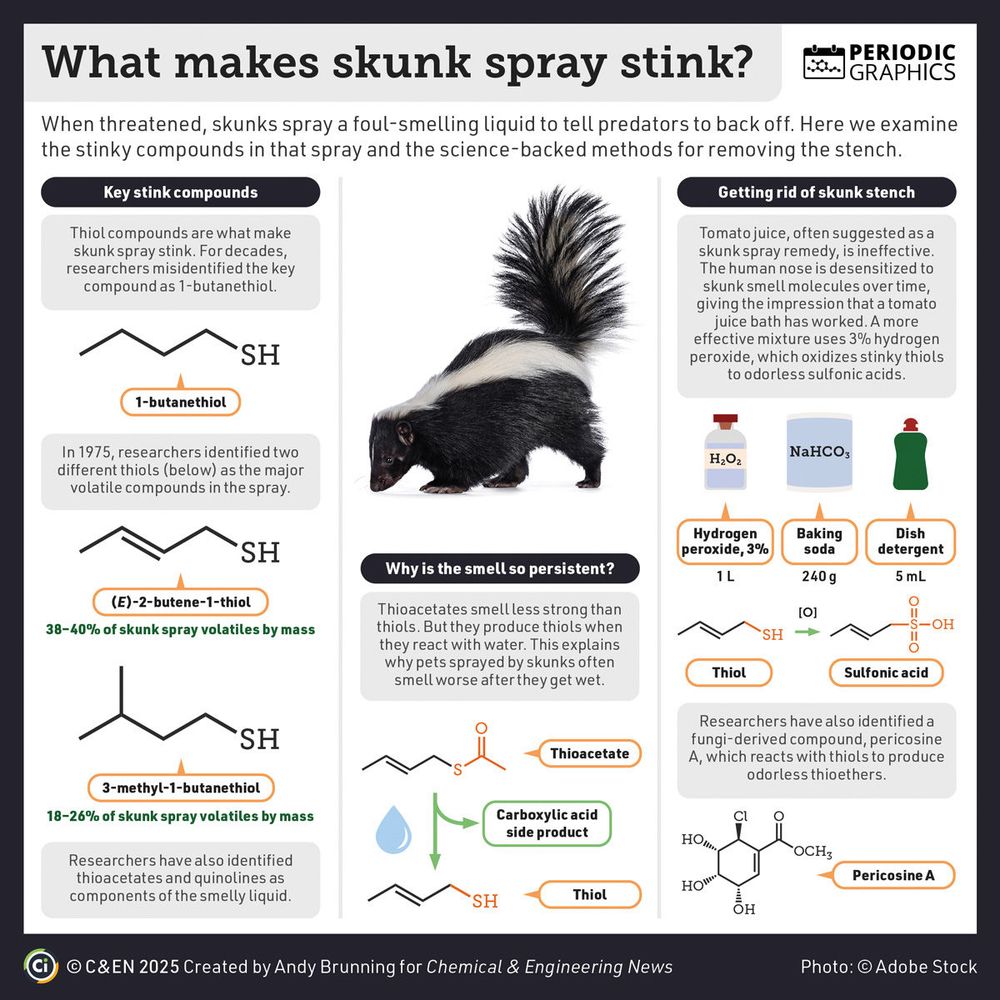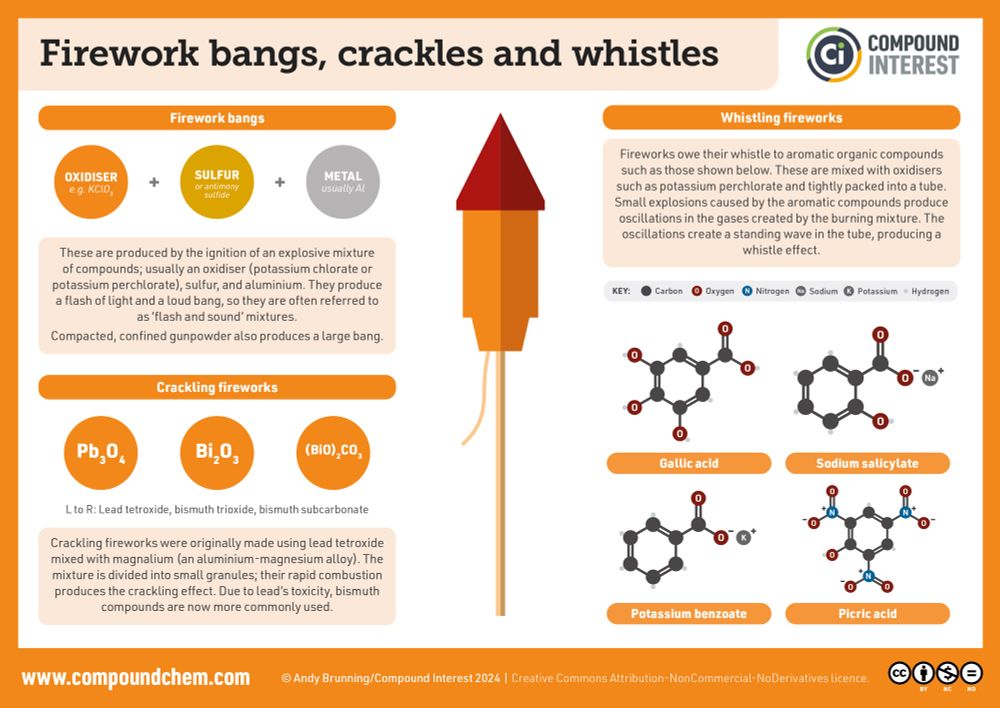
📅 #PeriodicGraphics in @cenmag.bsky.social
🥇 ACS 2025 Interpreting Chemistry for the Public award
🏆 ABSW 2018 Science Blog Award
🖊️ Posts by @andy.compoundchem.com
🌐 Website: compoundchem.com
#ChemSky 🧪

#ChemSky 🧪
🧪 #ChemSky

🧪 #ChemSky
www.bbc.co.uk/news/article...
#ChemSky

www.bbc.co.uk/news/article...
#ChemSky
#chemsky 🧪

#chemsky 🧪
Find out more in this graphic: www.compoundchem.com/2020/11/11/p...
#ChemSky 🧪

Find out more in this graphic: www.compoundchem.com/2020/11/11/p...
#ChemSky 🧪
cen.acs.org/materials/po...

cen.acs.org/materials/po...
Why are pumpkins orange, and what do pumpkins have to do with pumpkin spice? Here are the chemical answers in @cenmag.bsky.social: cen.acs.org/articles/93/...
#ChemSky 🧪

Why are pumpkins orange, and what do pumpkins have to do with pumpkin spice? Here are the chemical answers in @cenmag.bsky.social: cen.acs.org/articles/93/...
#ChemSky 🧪
The mole makes it easier to describe the huge numbers of atoms, molecules, or ions that participate in chemical reactions.
More in this graphic: www.compoundchem.com/2014/10/23/m...
#ChemSky 🧪

The mole makes it easier to describe the huge numbers of atoms, molecules, or ions that participate in chemical reactions.
More in this graphic: www.compoundchem.com/2014/10/23/m...
#ChemSky 🧪
#ChemSky 🧪

#ChemSky 🧪
Wishing you and your loved ones a very Happy Diwali filled with love, light, and laughter. #RSCIndia #ChemSky #Diwali2025

Wishing you and your loved ones a very Happy Diwali filled with love, light, and laughter. #RSCIndia #ChemSky #Diwali2025
Dive into the chemistry behind apple sweetness, tartness, and aroma in this graphic!
👉 Read more: www.compoundchem.com/2025/10/16/a...
#ChemSky 🧪

Dive into the chemistry behind apple sweetness, tartness, and aroma in this graphic!
👉 Read more: www.compoundchem.com/2025/10/16/a...
#ChemSky 🧪

Dive into the chemistry behind apple sweetness, tartness, and aroma in this graphic!
👉 Read more: www.compoundchem.com/2025/10/16/a...
#ChemSky 🧪





#chemsky 🧪

#chemsky 🧪
After two weeks of #ChemEd #ChemSky #Chemistry summaries on electrophilic aromatic substitution here, by popular demand, is one chart that covers just the basics.
Enjoy.

After two weeks of #ChemEd #ChemSky #Chemistry summaries on electrophilic aromatic substitution here, by popular demand, is one chart that covers just the basics.
Enjoy.
we found that most protein powders and shakes have more lead in one serving than our experts say is safe to have in a day (🧵)
www.consumerreports.org/lead/protein...

we found that most protein powders and shakes have more lead in one serving than our experts say is safe to have in a day (🧵)
www.consumerreports.org/lead/protein...
Here's a look at the chemistry of arguably the most iconic mushroom, fly agaric, and what makes them so brightly coloured and hallucinogenic: www.compoundchem.com/2024/11/11/f...
#ChemSky 🧪

Here's a look at the chemistry of arguably the most iconic mushroom, fly agaric, and what makes them so brightly coloured and hallucinogenic: www.compoundchem.com/2024/11/11/f...
#ChemSky 🧪

Here's a look at some of the big jobs tiny particles can do in @cenmag.bsky.social
cen.acs.org/articles/94/...
#ChemSky 🧪

Here's a look at some of the big jobs tiny particles can do in @cenmag.bsky.social
cen.acs.org/articles/94/...
#ChemSky 🧪

#ChemSky 🧪





